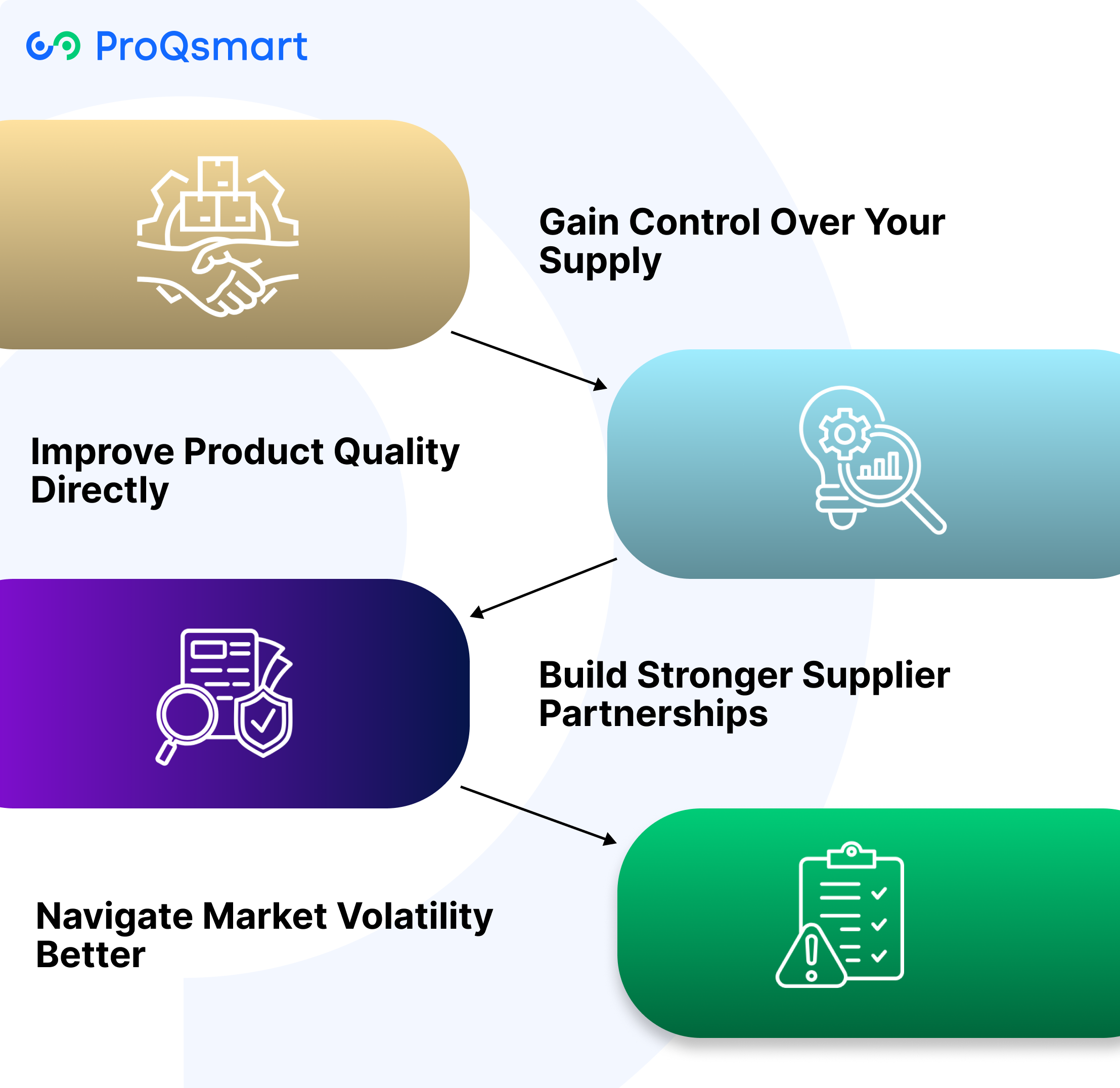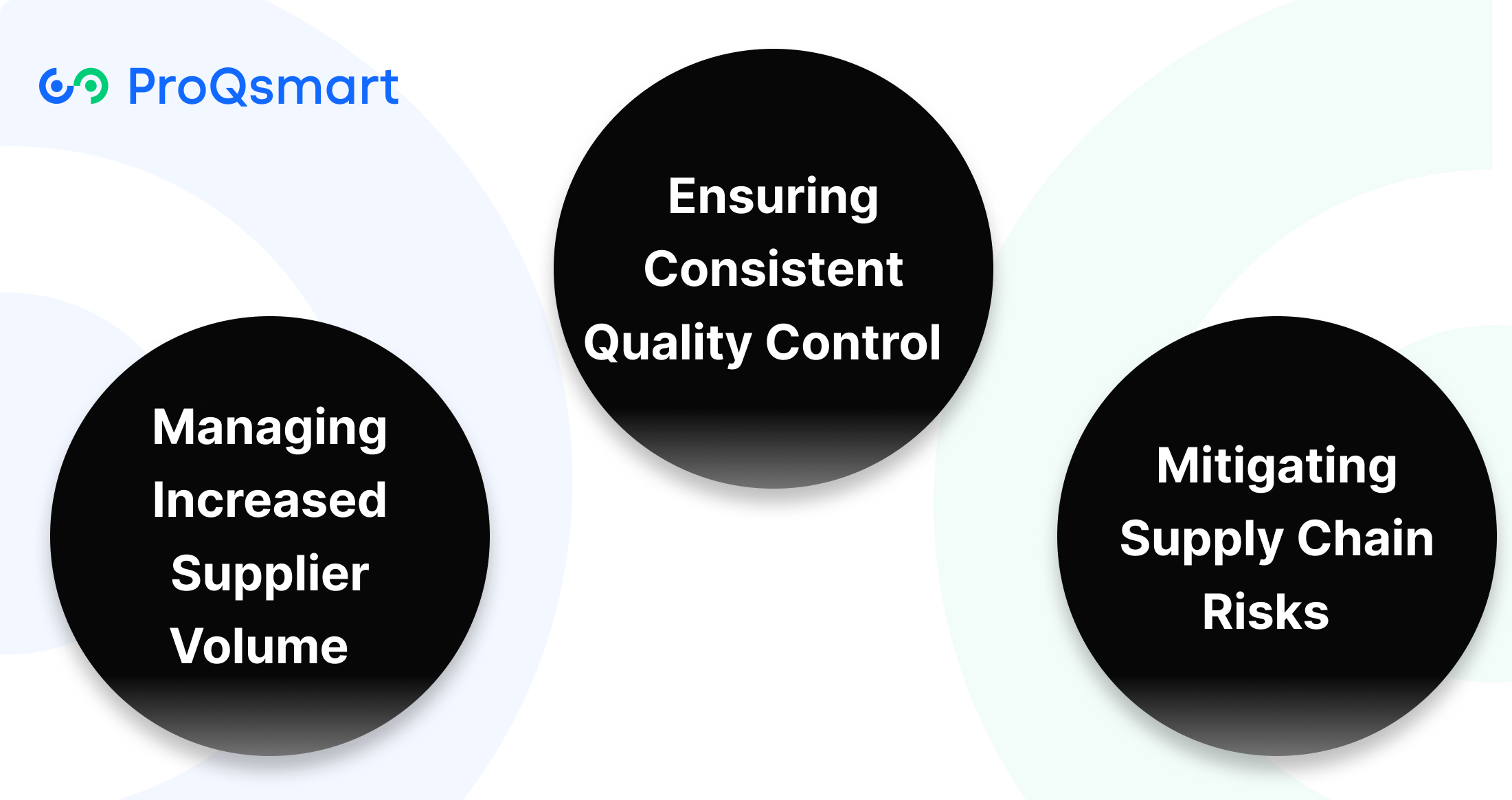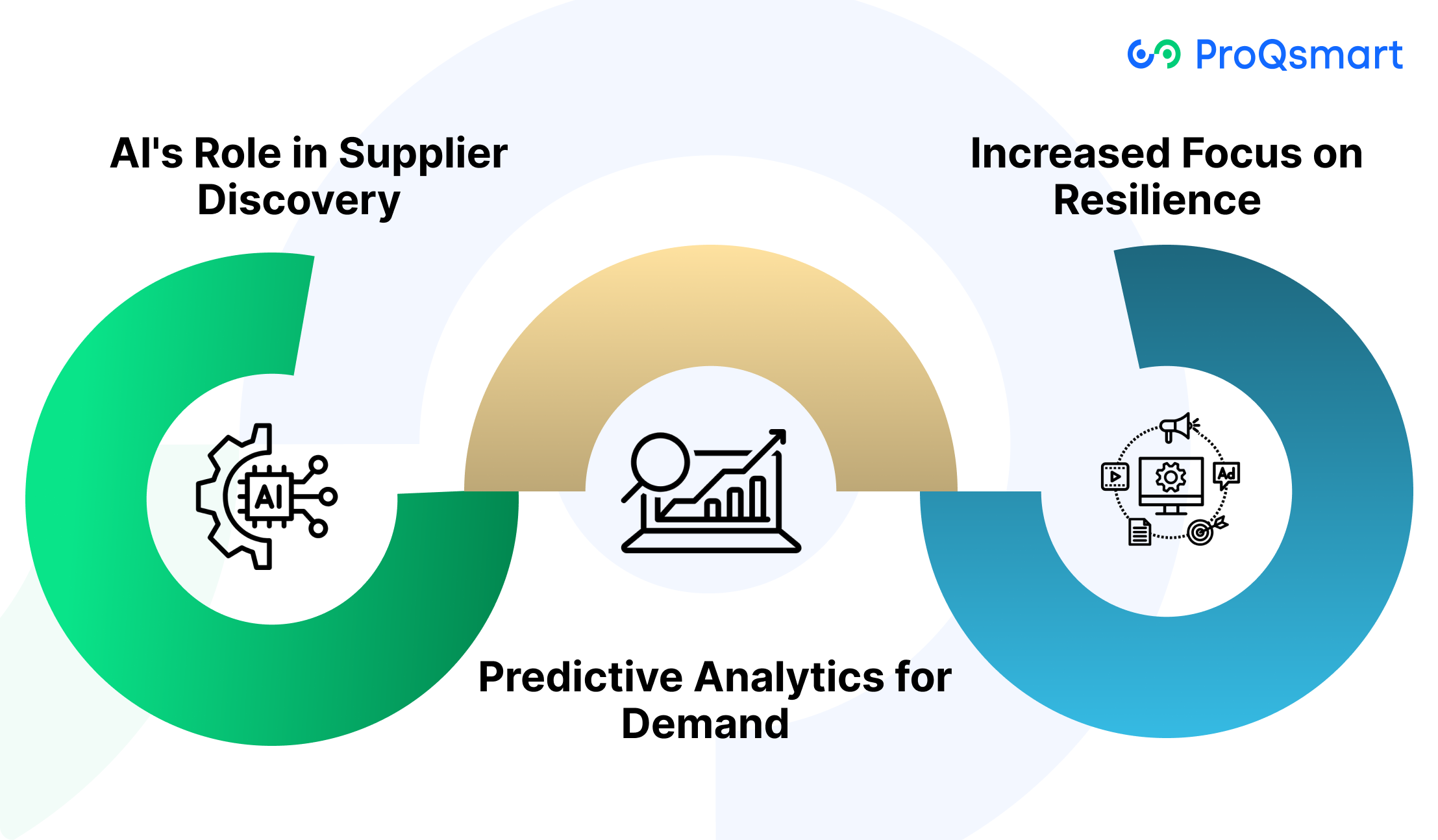Direct sourcing is transforming how companies procure goods and services, especially in markets where building direct relationships with manufacturers or primary suppliers is key to gaining a competitive edge. Rather than relying solely on intermediaries or third-party vendors, direct sourcing empowers organizations to streamline procurement, reduce costs, and improve supply chain visibility. However, implementing a successful direct sourcing strategy requires careful planning, strong stakeholder alignment, and the right technology to support your goals.
This article outlines five essential steps to help your organization adopt and optimize direct sourcing, ensuring you maximize value, minimize risk, and establish productive supplier partnerships from the start.
What Is Direct Sourcing in Procurement?
The direct sourcing approach in procurement focuses on sourcing the goods and services you truly need for your operations. These products play a key role in affecting the company’s overall performance and end product. Inputs like raw materials, components, and other items are essential to the production process and directly influence profit margins.
This process is not just about obtaining supplies; it significantly impacts the overall revenue stream from the company’s core business line. By implementing a direct sourcing solution, businesses can enhance their enterprise-wide performance and maintain a competitive edge in the market.
Direct sourcing is sometimes confused with direct procurement, both focusing on purchasing materials essential to the production process. With direct sourcing, product quality, cost-effectiveness, and reliably meeting the specified delivery timeline take priority.
Beyond Traditional Procurement Models
Direct sourcing is a step beyond the traditional procurement models of the past by establishing direct connections with suppliers. Rather than going through third-party intermediaries or agents, a business goes direct.
This methodology is proven to give you more control over the complete supply chain and manufacturing process. The result is that you end up with tighter quality control and a more dependable delivery.
Reducing costs is only the beginning. It’s a smart investment, not a cost, into what makes their business thrive. Fifth, companies should measure how these direct sourcing investments create new business opportunities.
As an example, a manufacturer would directly source specialized alloys to support the launch of a new product line. Further, they’re able to quantify the resulting impact on market share and revenue.
Direct Sourcing vs. Indirect Sourcing
|
Aspect |
Direct Sourcing |
Indirect Sourcing |
|---|---|---|
|
Definition |
Procuring materials and components directly used in manufacturing; these items become part of the final product. |
Procuring goods and services that support operations but do not enter the final product. |
|
Impact |
Directly influences product quality, production cost, and delivery timelines. |
Supports operational efficiency and day-to-day business functions. |
|
Supplier Relationship |
Involves strategic partnerships focused on reliability and quality. |
Usually transactional with a wider range of vendors for flexibility. |
|
Procurement Focus |
Securing essential inputs required for manufacturing or service delivery. |
Managing expenses related to business operations and support services. |
|
Business Role |
Critical to product development and competitive positioning. |
Ensures smooth functioning of internal processes and overall business support. |
Why Consider Direct Sourcing?

There are many strong reasons for organizations looking to refine their supply chain to consider direct sourcing. It delivers significant cost savings, increases operational efficiency, and allows for more direct control over suppliers, all of which play a critical role in business continuity and growth.
Direct sourcing positions companies to be more agile during periods of market volatility and supply chain disruptions to better serve customers’ needs. In short, a strategic approach to supplier selection is key to successful direct sourcing.
Gain Control Over Your Supply
With direct sourcing, you get more visibility and greater control over your entire supply chain. With this control, companies can better plan their inventory, minimizing the chance of a hold up.
Through direct sourcing, organizations gain greater visibility and control over their suppliers, helping them hold suppliers accountable and driving optimal performance. With proactive inventory management, you’ll have an adequate supply on hand for your operations, avoiding disruptions and costly production schedule delays.
Improve Product Quality Directly
Direct sourcing allows companies to spend more time with suppliers to meet their expectations for product quality. This partnership allows for more direct oversight of material selection and production processes, ensuring a high-quality and consistent finished product.
With greater control over product quality, direct sourcing enables companies to act fast and prevent quality issues from reaching production. Direct procurement impacts cost control and production efficiency and is based on predictable supply chains.
For instance, close collaboration with a raw material supplier can ensure materials meet specific quality standards, reducing defects in the final product.
Build Stronger Supplier Partnerships
Direct sourcing allows organizations to create stable relationships with mission-critical suppliers. These closer partnerships result in improved collaboration, innovation, and win-win opportunities.
By fostering open communication and collaboration with suppliers, procurement teams can create a more stable and reliable supply chain. Similar to how a manufacturer would work with a highly-specialized, high-value component supplier to jointly develop the next great product innovation.
Strengthening ties with strategic suppliers is a major focus of both direct sourcing and procurement.
Navigate Market Volatility Better
Direct sourcing means companies can react immediately to volatile market conditions and shifts in demand. This increased agility allows companies to keep a competitive edge when facing the volatility of market changes.
Direct sourcing empowers companies to diversify their supplier base and avoid dependence on single-source suppliers. Without a robust direct procurement process, a company is left susceptible to project delays, inflated production costs, or a degraded end product.
Implement Your Direct Sourcing Strategy
Implementing a direct sourcing approach involves a series of well-defined steps, from initial assessment to ongoing performance monitoring. The goal is to gain more control over the recruitment process, reduce costs, and improve supplier relationships. Success depends on securing internal buy-in, aligning supplier selection with company objectives, and leveraging direct sourcing technology to boost efficiency.
Assess Your Current Sourcing Needs
Start by thoroughly analyzing your current sourcing practices to identify areas for improvement. Consider questions like:
-
Where are the bottlenecks?
-
Where are we overspending?
-
What quality issues exist?
Identify which materials or services have the most potential for direct sourcing, taking into account volume, criticality, and market availability. Evaluate your supplier base for gaps or overreliance and set clear objectives and KPIs to measure progress, such as targeting a specific percentage of cost savings.
Build Your Business Case Internally
Develop a strong business case highlighting the benefits of a direct sourcing approach, including cost savings, quality improvements, and risk reduction. Use data and real-life examples to support your case. Present this to key stakeholders—senior management, finance, and operations—to build consensus and secure their support. Address concerns directly, such as quality control measures, and demonstrate how a direct sourcing solution can create new business opportunities and competitive advantages.
Identify Potential Direct Suppliers
Conduct market research to identify potential direct sourcing partners beyond your existing network. Use industry databases, trade shows, and forums to compile a broad list of candidates. Evaluate suppliers based on capabilities, quality standards, and reliability, while considering advanced direct sourcing strategies. Perform due diligence by visiting facilities and interviewing references. Cast a wide net initially, then narrow down options according to your specific needs.
Develop Supplier Qualification Criteria
Create clear, measurable criteria to qualify suppliers, including quality certifications, financial stability, and ethical practices. Establish a documented, transparent vetting and onboarding process involving multiple stakeholders. Implement a scoring system to objectively evaluate and rank suppliers, prioritizing those who can deliver sustained value and reduce risk over time in the direct sourcing program.
Choose the Right Technology Stack
Technology is critical to implementing and scaling your direct sourcing solution. Consider e-procurement platforms and supplier relationship management (SRM) systems that offer features like automated workflows, real-time collaboration, compliance tracking, and integration with your existing tools. AI-powered platforms such as ProQsmart can simplify the recruitment process, document management, and supplier performance monitoring, helping you save time, improve compliance, and achieve cost savings. Select solutions that fit your company’s unique needs, budget, and technology ecosystem.
Overcoming Direct Sourcing Hurdles

Managing Increased Supplier Volume
The biggest hurdle for many is managing the increased volume of suppliers. Technology is key to creating a more efficient supplier management process. This entails employing technology for automated onboarding, performance management, and communication.
Adopting Supplier Relationship Management (SRM) systems, if applicable, is key for monitoring supplier performance and maintaining communication. Here’s a streamlined approach:
-
Automate supplier onboarding processes.
-
Implement a centralized communication platform.
-
Use data analytics to monitor supplier performance.
-
Establish clear performance metrics and expectations.
Ensuring Consistent Quality Control
Ensuring consistent quality control is essential. Maintaining quality is everything, and it takes strong processes. Companies need to set quality standards that are easy to understand and give suppliers ongoing feedback.
Performing frequent audits and inspections of supplier facilities to ensure compliance is crucial too. A comprehensive quality control checklist might include:
-
Detailed product specifications.
-
Regular supplier audits.
-
Material testing protocols.
-
Feedback mechanisms for continuous improvement.
Mitigating Supply Chain Risks
As we’ve seen, supply chain disruptions can severely cripple business operations. One of the best ways to overcome these risks is by diversifying the supplier base. Creating contingency plans, consistently tracking global events, and so forth, are just a few additional steps.
Proactive risk management involves:
-
Identifying potential supply chain vulnerabilities.
-
Developing alternative sourcing options.
-
Monitoring geopolitical and economic trends.
-
Establishing clear communication channels with suppliers.
Measuring Direct Sourcing Success
Measuring the success of direct sourcing strategies requires a clear understanding of key performance indicators (KPIs) and a robust system for tracking progress. Vishal acknowledges the need to have well-defined SLAs and KPIs. In doing so, he makes sure that direct sourcing efforts meet established goals and success criteria.
He stresses the need for consistent reporting to all involved parties to maintain buy-in from key stakeholders.
Key Performance Indicators (KPIs)
Defining specific KPIs is crucial for measuring the success of any direct sourcing strategy. Examples of these KPIs include cost savings, supplier performance, and overall supply chain efficiency. For example, cost savings can be measured by comparing the costs of direct sourcing with traditional procurement methods.
Supplier performance can be evaluated based on on-time delivery rates, quality metrics, and responsiveness to inquiries. Regular tracking of these KPIs allows for continuous monitoring and helps identify areas that need improvement.
|
KPI |
Description |
Measurement |
Target |
|
Cost Savings |
Reduction in procurement costs achieved through direct sourcing. |
(Traditional Procurement Cost – Direct Sourcing Cost) / Traditional Procurement Cost |
15-20% Reduction |
|
Supplier On-Time Delivery |
Percentage of orders delivered on or before the agreed-upon delivery date. |
(Number of On-Time Deliveries / Total Number of Deliveries) x 100 |
95% or Higher |
|
Product Quality |
Percentage of products meeting or exceeding quality standards. |
(Number of Products Meeting Standards / Total Number of Products Inspected) x 100 |
98% or Higher |
|
Supply Chain Efficiency |
Time taken from order placement to delivery. |
Average time in days/weeks from order to delivery. |
10% Reduction in Lead Time |
Tracking Cost Savings Effectively
Establishing robust systems for tracking cost savings realized through direct sourcing will be critical. Vishal’s fifth piece of advice is to track costs of direct sourcing against traditional procurement methods. He calls for a deep dive into the impact of direct sourcing on profit margins and the bottom line.
ProQsmart is a next-generation AI-powered procurement platform built to improve the future of procurement. It gives companies the confidence to act quickly and cut through red tape which helps them save millions. This platform helps to connect procurement to the budget in real-time, improving tracking and accountability.
|
Metric |
Direct Sourcing |
Traditional Procurement |
Savings |
|
Unit Cost |
$80 |
$100 |
$20 per unit |
|
Order Processing Time (Days) |
2 |
5 |
3 days |
|
Transaction Costs |
$50 |
$100 |
$50 per transaction |
Evaluating Supplier Performance Metrics
Defining which specific metrics you will use to evaluate supplier performance upfront is key to making sure suppliers will perform as required. These can be on-time delivery, product quality, responsiveness, etc.
By tracking these metrics on a frequent basis, you can quickly identify high-performing suppliers and low-performing suppliers. Constructive feedback must be regularly given to suppliers across the performance spectrum, and joint business planning must occur to motivate positive change.
|
Metric |
Supplier A |
Supplier B |
Supplier C |
|
On-Time Delivery |
95% |
90% |
85% |
|
Product Quality |
98% |
95% |
92% |
|
Responsiveness |
24 hrs |
48 hrs |
72 hrs |
Future Trends Shaping Direct Sourcing

Direct sourcing strategies are rapidly evolving due to advanced direct sourcing technology and the increasing demand for resilient supply chains. To remain competitive, companies must adopt a direct sourcing approach that incorporates new procurement methodologies and technologies into their recruitment process. Investing in direct sourcing tools and automated software is essential to drive effective procurement.
AI’s Role in Supplier Discovery
AI is revolutionizing how companies identify and evaluate potential suppliers. Using AI-powered tools like ProQsmart, a procurement platform that streamlines processes and uses data to inform decision-making, businesses can screen suppliers more efficiently and assess risks more accurately.
For example, AI can analyze supplier data to predict potential disruptions or identify cost-saving opportunities. This leads to better supplier selection and reduced sourcing costs, ensuring enough supply for smooth operations.
Predictive Analytics for Demand
Predictive analytics is changing the game when it comes to demand forecasting and inventory optimization. By utilizing historical data and market trends, businesses can predict their supply chain disruptions and avoid the fallout.
This methodology streamlines supply chain efficiency, saving time and money. For example, predictive analytics would allow a construction company that knows it will experience a material shortage to plan its procurement strategy to mitigate the shortage’s impact.
Even effective cost management strategies, like should-cost analysis, become more accurate, informing negotiations with suppliers on price.
Increased Focus on Resilience
Building resilient supply chains has quickly become a high priority. This means expanding the supplier base, increasing risk mitigation efforts, and increasing supply chain transparency.
Technology is going to be a key factor here, as it allows companies to pivot and adapt to disruptions in real-time. Direct sourcing, one piece of a total talent acquisition strategy, is getting hotter by the minute.
Conclusion
Direct sourcing presents a significant opportunity to elevate procurement processes, enabling organizations to achieve greater control, reduce costs, and build more resilient supply chains. By understanding the core principles of direct sourcing and carefully implementing the steps outlined, companies can unlock significant benefits-from stronger supplier relationships to improved quality control and enhanced transparency. A well-planned and executed direct sourcing strategy not only leads to immediate cost savings but also positions organizations for long-term agility and competitiveness in dynamic markets.
To take your direct sourcing strategy to the next level, explore how ProQsmart’s AI-powered procurement platform can streamline your processes, automate tasks, and provide real-time insights for better decision-making. Schedule a demo today and discover how ProQsmart can help you optimize your supplier relationships and drive measurable results.




